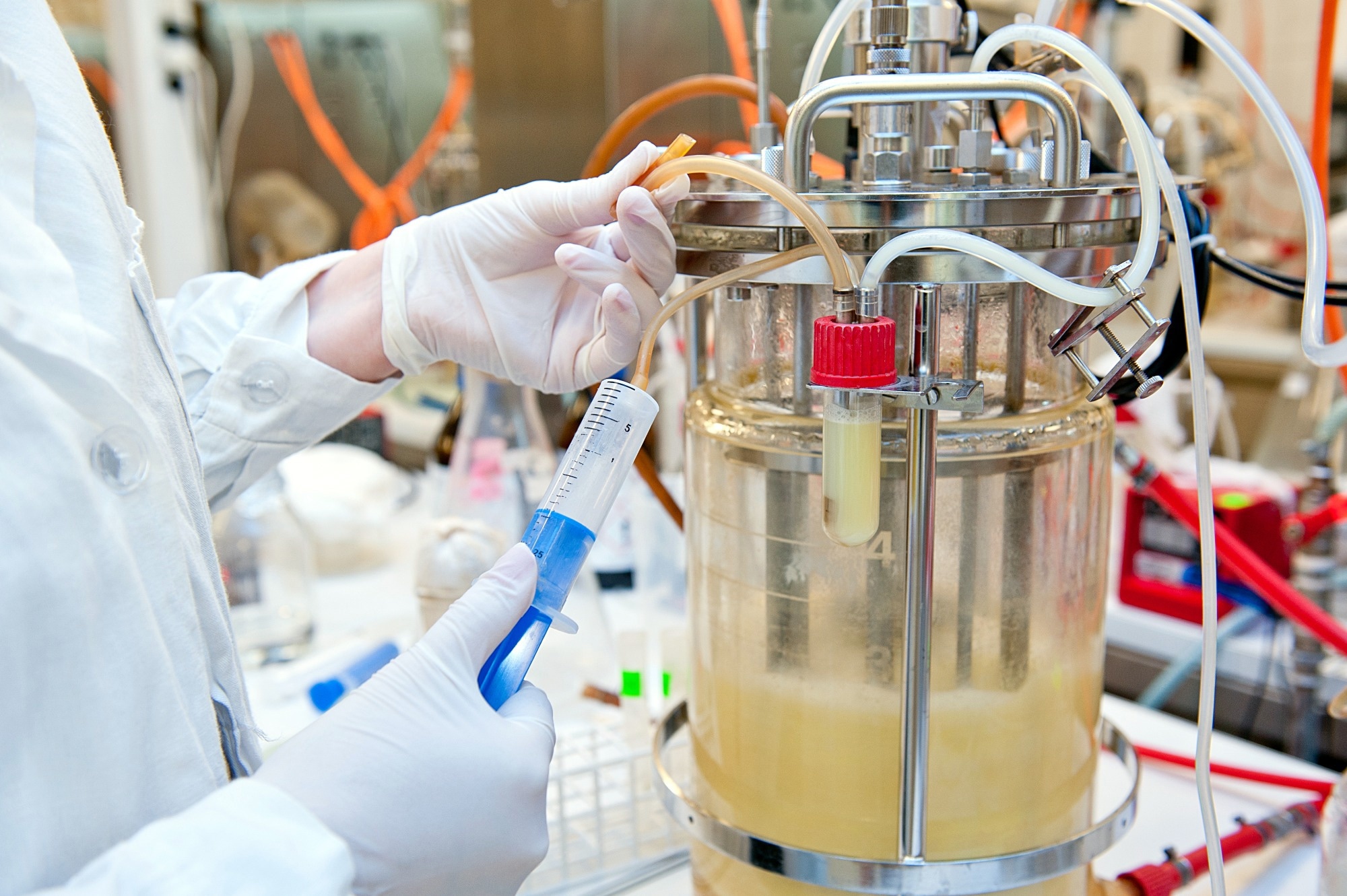 By Pooja Toshniwal PahariaReviewed by Lauren HardakerAug 13 2025
By Pooja Toshniwal PahariaReviewed by Lauren HardakerAug 13 2025In a recent study published in Frontiers in Bioengineering and Biotechnology, researchers developed Auto-CeSS, an automated system for aseptic collection of 30 μL of sample. This volume is smaller than most current commercial systems, notably smaller than aseptic platforms commonly used in CGT workflows, and capable of sampling intervals as short as 15 minutes.
 Image credit: borzywoj/Shutterstock.com
Image credit: borzywoj/Shutterstock.com
Incorporating process analytical technologies (PATs) in chimeric antigen receptor (CAR) T cell production is essential for real-time quality monitoring and early identification of process inconsistencies. Manual sample collection is laborious and variable due to manual handling, and increases the likelihood of contamination.
Automated sampling systems address these challenges by reorganizing workflows, ensuring sterility, and supporting future regulatory compliance. They are particularly valuable for perfusion-based bioreactors (Breez), which generate continuous spent media for analysis. However, most commercial systems require large minimum sample volumes (1.0 mL), limiting their use in scaled-down cultures. Small-volume automated platforms are therefore critical for efficient, high-throughput bioprocess monitoring in cellular therapy manufacturing.
About the Study
In the present study, researchers designed Auto-CeSS as an automated, at-line aseptic sampling platform for real-time monitoring of T cell cultures, enabling closed, contamination-free liquid transfers. Auto-CeSS connects upstream bioreactors and downstream collection points directly through a Device of Automated Aseptic Sampling (DAAS). This unit integrates pinch valves, a microfluidics-based peristaltic pump, and dual aseptic barriers (AP1 and AP2) to ensure liquid transfers remain functionally closed and sterile throughout the sampling process.
The system is made of two hardware modules: an Inlet Sampling Pinch valve module (ISP, located above the sampler) for switching between the sample and wash lines, and a rotary port with a 12-port rotary valve for multi-channel sample collections (below the sampler). The microcontroller-driven pinch valves and tube sensors ensure precise volume control. The modules confer a wash-and-purge functionality in the sampler for system cleaning between consecutive sampling cycles, preventing carryover and tubing blockage. The team determined 1,000 µL of phosphate-buffered saline (PBS) as the optimal wash volume to achieve <0.5% carryover.
The system’s Graphical User Interface (GUI) allows operators to start a sampling run with a single click and then step away. The process is fully automated until completion, eliminating the need for user intervention mid-cycle. When operating, the system draws culture media to the aseptic barrier, creates and disperses a sample bubble of defined volume, and returns residual fluid to the bioreactor to eliminate dead volume. An emergency stop button and time-based overrides ensure failsafe operation.
For testing, researchers combined the Auto-CeSS system with perfusion microbioreactors, including a 2.0 mL perfusion-based system and an 8.0 mL gas-permeable fed-batch well plate. They interfaced Auto-Cess with T cells isolated from primary human peripheral blood mononuclear cells (PBMCs) and cultured in the microbioreactors at 37°C, 5.0% CO₂, ≥ 80% air-saturation dissolved oxygen, and pH 7.4 ± 0.05 in the Breez system; G-Rex cultures were maintained in a standard 37°C, 5% CO₂ incubator without active pH or dissolved oxygen control.
The team collected 200 µL of the culture supernatant daily between days 2 and 12 to analyze metabolite levels, including glucose, lactate, ammonia, glutamine, and glutamate. Metabolic profiles from Auto-CeSS closely matched manual sampling, except ammonia in Breez runs, where refrigerated storage at 4°C before freezing at −80°C caused measurable differences, highlighting storage-handling effects.
Sterilization processes involved autoclaving components at 121.0°C for 20 minutes, wiping with 70.0% ethanol, exposure to biosafety cabinets (BSCs) for 30 minutes, and 0.22 µm polyethersulfone (PES) filters. Positive controls included Bacillus subtilis and Staphylococcus aureus.
Results
The team found that Auto-CeSS can collect sample volumes of 30 μL aseptically. Microsampling is crucial for cell therapy products, where limited starting material necessitates minimal sampling volumes to ensure the final therapeutic dose prioritization.
Auto-CeSS can be integrated with miniaturized 2.0 mL Breez and large-scale 8.0 mL fed-batch gas-permeable reactors (G-Rex) to collect cell culture supernatants capable of sampling intervals as short as 15 minutes. However, in this study, sampling was performed daily during the 12-day production of T cells. This setup effectively simulates real-world cell culture sampling scenarios. Integrating with diverse reactors enables off-line metabolic analysis, vital for monitoring cell differentiation in cell therapy production. Despite the ammonia noted above, metabolic analyses of samples obtained automatically by Auto-CeSS closely matched those collected manually, confirming the system’s accuracy.
Auto-CeSS eliminated the requirement for transferring G-Rex vessels from incubators to biosafety cabinets for sampling, enabling automated sampling using the Breez bioreactor in benchtop environments outside the BSCs. The decrease in manual handling by Auto-CeSS lowers contamination risk and minimizes disruption to bioreactor environments. Moreover, Auto-CeSS occupies less space and has a significantly lower production cost (approximately USD 10,000) than commercially used automated sampling systems, improving accessibility and adoption potential for a broader range of laboratories.
Based on the findings, Auto-CeSS is a significant advancement in cell therapy manufacturing. It offers an automated, aseptic, and small-volume sampling solution that enhances process monitoring, reduces contamination risks, and holds promise for scaling up production to meet patient demands. Future developments could include combining optical technologies for real-time, non-destructive monitoring, further enhancing in-process culture monitoring, and potentially leading to more efficient and consistent cell therapy production.
Journal Reference
Chan, Z. X., et al. (2025). Automated, aseptic sampling with small-volume capacity from microbioreactors for cell therapy process analysis. Frontiers in Bioengineering and Biotechnology, 13, 1612648. DOI: 10.3389/fbioe.2025.1612648. https://www.frontiersin.org/journals/bioengineering-and-biotechnology/articles/10.3389/fbioe.2025.1612648/full